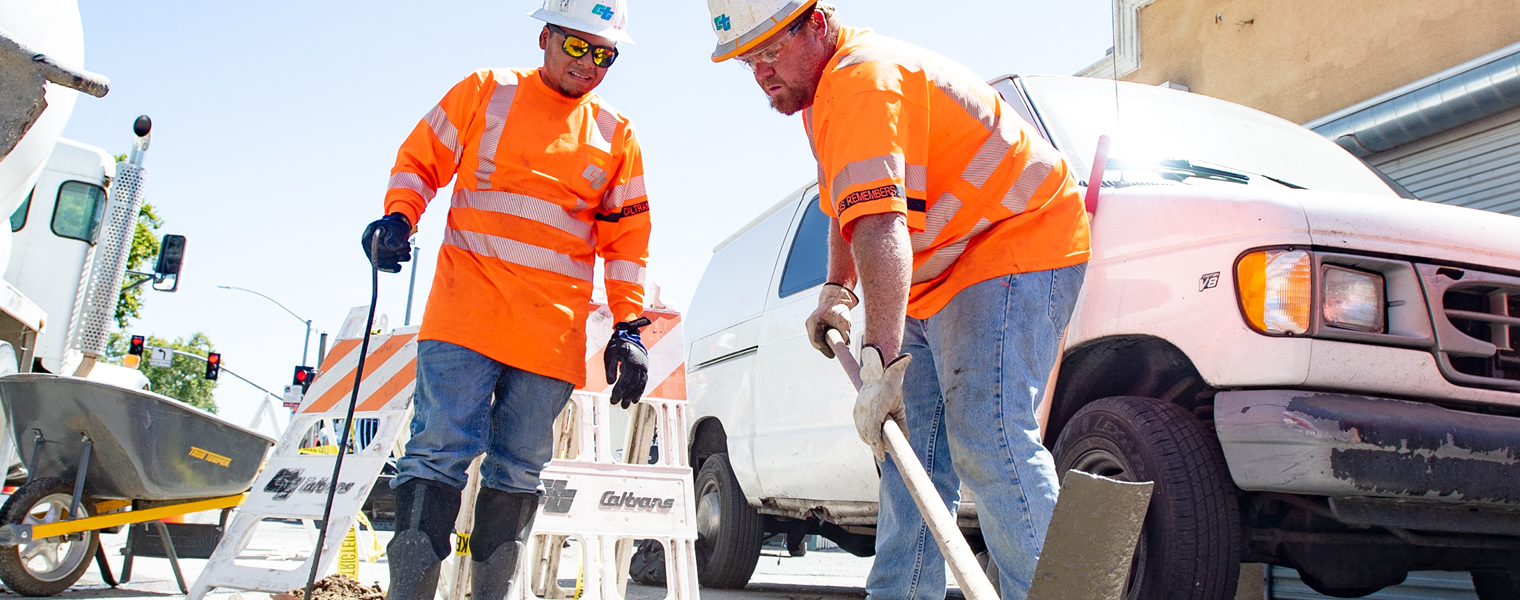Search for Cost Savings Pays Off
$233 Million in Efficiencies, More than Double Target, Achieved in 2018-19

Improvements that Caltrans made in its operations and project delivery process in the 2018-19 fiscal year has produced nearly double the savings as the previous year, according to an Annual Efficiencies Report prepared as a requirement of Senate Bill 1, the landmark transportation funding law.
The report, submitted to the Legislature, identified $233 million in cost savings in the fiscal year that ended June 30, 2019.
SB 1, the Road Repair and Accountability Act of 2017, requires that Caltrans identify at least $100 million annually in cost avoidance measures or process improvements. The Department exceeded that target in the first year of reporting by finding $123 million in savings, an amount that is being reinvested back into additional road maintenance and rehabilitation projects.
Caltrans said it found more ways to save money in 2018-19 that helped boost the amount of total savings. The Department also built on efficiency moves taken in the previous fiscal year.
All of the system improvements were grouped into “efficiency categories” based on type of cost avoidance/reduction measure. They are:

Innovative Tools • $108.9 million savings
- Acceleration of work, $64 million. Because of increased funding from SB 1, Caltrans moved up the construction schedules of projects and avoided cost escalation, which was pegged at 4.25 percent in 2018.
- Road striping contracts, $30.4 million. A change was made in the way these contracts are awarded to contractors to reduce the number of project days, lowering costs. Also, contractor crews were able to complete work at a faster pace due to increased working hours and flexible lane closures.
- Construction Manager/General Contractor program, $14.4 million. Rather than hiring a contractor just prior to construction, this process brings one in during the design stage to work collaboratively with Caltrans on eliminating potential pitfalls, manage costs and improving quality. After several years of successful trials, recent legislation now allows Caltrans to use this process on an unlimited number of projects. Savings were realized with two major projects in FY 2018-19 — the San Mateo Highway 101 phase 1, and Interstate 5-North Coast Corridor phase 4.
- Advance Mitigation credits, $123,000. Through this program, Caltrans purchases land for habitat conservation to offset the impacts of transportation projects. In 2018, mitigation “credits” for a project in San Luis Obispo County was bundled and purchased early in the process, avoiding escalating land costs.
Process Improvements • $98.1 million savings
- Value Analysis studies, $49 million. For certain projects, Caltrans is assigning teams of subject matter experts early in the development process to analyze function, benefits and cost. In 2018-19, eight major projects around the state were assessed using the Value Analysis method, yielding $49.3 million in avoided costs. All projects exceeding $25 million in cost are now required to undergo Value Analysis studies.
- Streamlining environmental review process, $41.5 million. Caltrans was the first transportation agency in the nation to reach an agreement with the Federal Highway Administration to conduct National Environmental Policy Act (NEPA) reviews of projects involving shared funding. By taking responsibility for such reviews, Caltrans can expedite the preparation of environmental documents and begin project construction earlier. No environmental protection standards are compromised during the process. Caltrans conducted 189 NEPA reviews in 2018-19.
- Value engineering change proposals, $4.4 million. Contractors who find ways to add value or lower costs on projects can petition Caltrans, which reviews the proposal and decides whether to issue a change order. There was a total of 26 value engineering change proposals accepted in the last fiscal year.
- Lean 6 Sigma program, $3.1 million. The program relies on internal process improvements to identify and eliminate waste or inefficiencies in operations. More efficient ways of doing business have been found in the areas of outdoor advertising agreements, encroachment permits, new product evaluations, contract preparations, fleet acquisition, building project design, asphalt testing, traffic collision report processing, construction support costs, internal investigations and disciplinary actions, and the local assistance invoice process.
New Technology • $26.1 million savings
- High-reflective material for road striping, $16.5 million. Within the last several years, Caltrans has begun laying down six-inch-wide road striping using a new generation of materials. The thermoplastic and tape materials last up to six years, compared with painted stripes that have a life of about one year. The new striping also is embedded with tiny glass beads that reflect light. About 16,000 miles of state highway lanes have been restriped so far, slightly under one-third of the lane miles in the State Highway System.
- Highway lighting LED retrofit, $5.7 million annually. Caltrans, which maintains about 80,000 pole-mounted streetlights statewide, has converted about 90 percent of those fixtures to light-emitting diode (LED) lighting. Energy costs have been cut 50 to 60 percent, and LED lights generally last at least 15 years, compared with four years for earlier-generation lighting. Caltrans estimates about a $1.7 million annual savings in labor costs because of less frequent maintenance and light replacement.
- Global positioning satellite device use in fleet, $2.2 million. Use of GPS devices in Caltrans’ light-duty fleet of passenger cars and trucks, which began in 2013, has led to more efficient fleet management.
- Mobile field devices, $1.5 million. Caltrans construction staff began using tablets on job sites in the last fiscal year. (See story, page 28.)
- High-performance reflective signs, $226,000. New reflective sheeting is now being used to make overhead and roadside signs being installed in place of older-generation displays. Because the new signs are easier to see, less lighting is required, resulting in lower energy costs. It may take up to decade to replace all of Caltrans’ estimated 20,000 overhead signs.
Source: SB 1 Annual Efficiencies Report 2018-19

